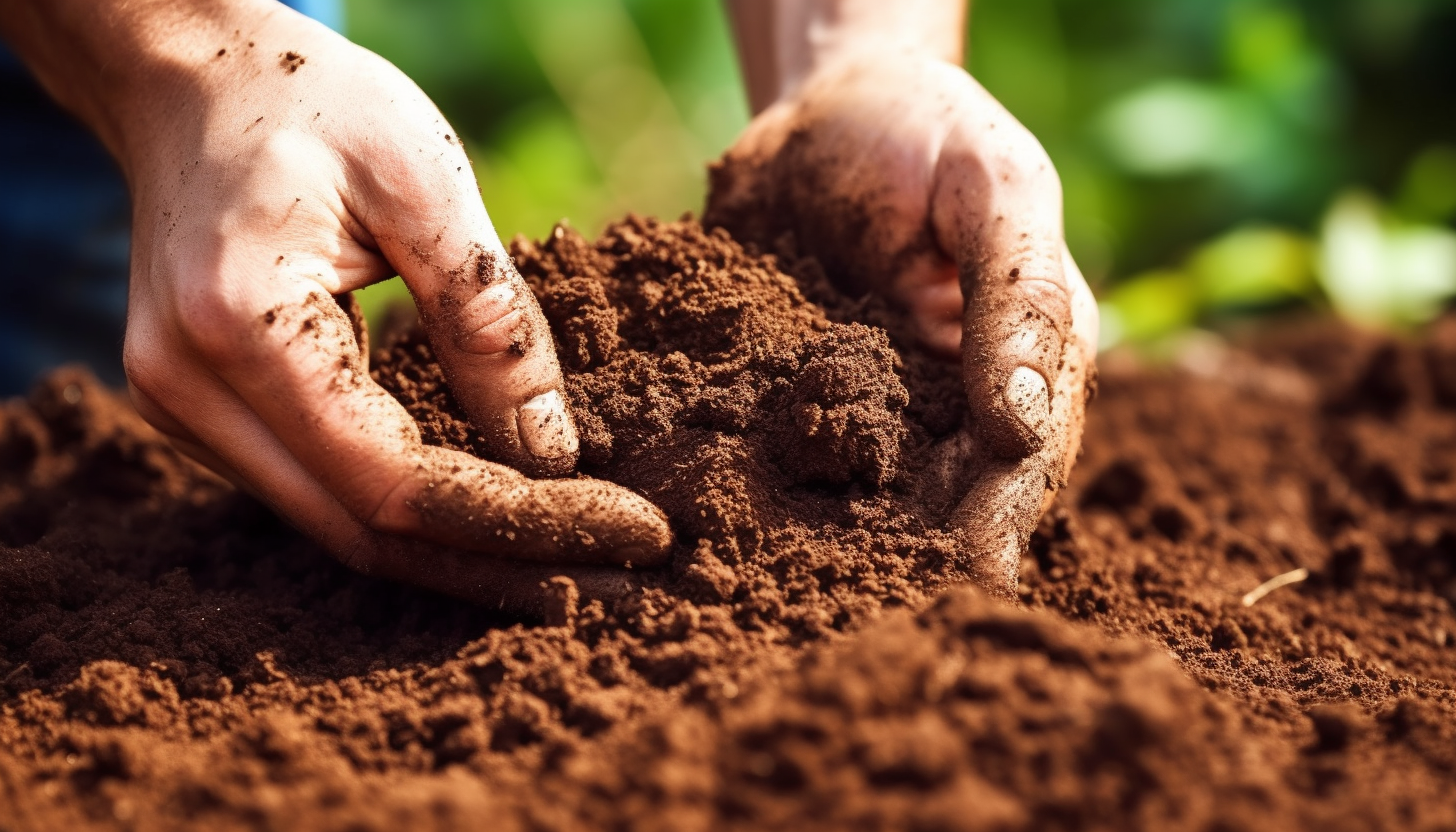P
May 28, 2023
Improving Clay Soil for Gardening: Tips for Creating a Favorable Growing Environment
#Improving Clay Soil
#Gardening Tips
#Fertile Soil
#Drainage
#Aeration
#Nutrient Retention
#Compost
#Organic Matter
#Raised Beds
#Soil Amendments
#Plant Growth

improving-clay-soil-thumbnail
Understanding Clay Soil
Clay soil is a common type found in many parts of the world. It is highly absorbent, often requiring more watering and more frequent fertilizing than other types of soil. However, with the right gardening tips, it can be transformed into a fertile, healthy growing environment for plants. Clay soil is characterized by its sticky, plastic-like texture. It often lacks adequate drainage, making it prone to compaction and waterlogging. Clay soil can be challenging to work with, but with the right care, it can become a fertile, well-draining growing environment.
Before we get into the strategies for improving clay soil, it's important to understand the role of organic matter and soil amendments in creating a fertile soil environment. Organic matter is the portion of soil composed of living and recently living organisms. It includes humus, decaying plant matter, and living organisms. Organic matter improves soil structure, promotes beneficial microbial activity, and holds nutrients and water, improving soil fertility and drainage. Soil amendments are materials added to soil to improve its physical or chemical properties. Examples of soil amendments include compost, lime, gypsum, and manure.
Improving Clay Soil: The Gardening Tips
The first step in improving clay soil is adding a generous amount of organic matter. This can be in the form of compost, aged manure, leaf litter, or another organic material. Adding organic matter improves the structure of clay soil, improving drainage by increasing pore space and promoting soil microbial activity, which improves nutrient cycling. The addition of organic matter also increases the amount of available nutrients in the soil. It's important to ensure that the soil is well-aerated when adding organic matter, as compaction can hinder the incorporation of the new material.
The addition of organic matter is only the first step in improving clay soil. The next step is adding soil amendments that improve drainage and fertility. One of the most effective amendments for clay soil is compost. Compost is a mixture of decomposed organic matter and soil, and it can add significant amounts of nutrients and organic matter to clay soil. It also improves drainage by adding pore space and improving soil structure. Lime can also be used to improve clay soil. Lime helps to neutralize the acidic nature of clay soil, improving its ability to hold nutrients and water.
Raised Beds and Soil Amendments
Raised beds are an excellent strategy for improving clay soil. The raised bed allows for more even drainage, reducing the risk of waterlogging. It also allows for a better aeration of the soil, promoting microbial activity and increasing the availability of nutrients. Raised beds can be filled with a mixture of improved clay soil, compost, and lime. This mixture can be improved over time with additional organic matter and soil amendments. Another strategy for improving clay soil is the use of raised beds. Unlike traditional beds, raised beds have a raised soil bed, making it easier for water to drain off. This results in a much more fertile environment for plants.
Clay Soil and Plant Growth
The improved fertility and drainage of clay soil can have a significant impact on plant growth. Plants will have access to more nutrients, and the soil will be better able to retain water, resulting in less frequent watering. The improved soil structure provided by the addition of organic matter and amendments will also improve the overall health of the soil, resulting in better root development and improved plant growth. Finally, the improved aeration and drainage of clay soil will reduce the risk of root rot and other soil-borne diseases, resulting in healthier plants.
In conclusion, improving clay soil is a multi-step process. The addition of organic matter improves the fertility and drainage of clay soil, while the addition of soil amendments improves the structure and drainage of the soil. Raised beds and the use of compost and lime can significantly improve clay soil, creating a fertile environment for plant growth.
As a gardener, it's important to remember that improving clay soil is a long-term process. It can take several years of additions and amendments to significantly improve clay soil. However, with patience and persistence, you can transform clay soil into a fertile, healthy growing environment for your plants.


